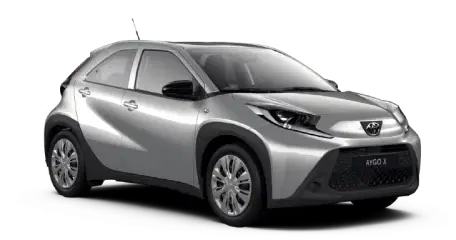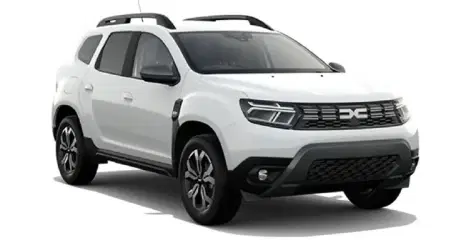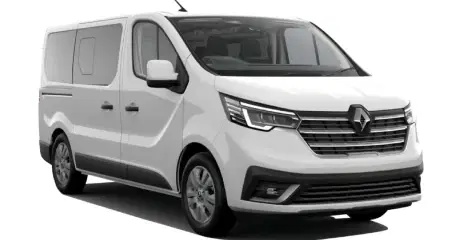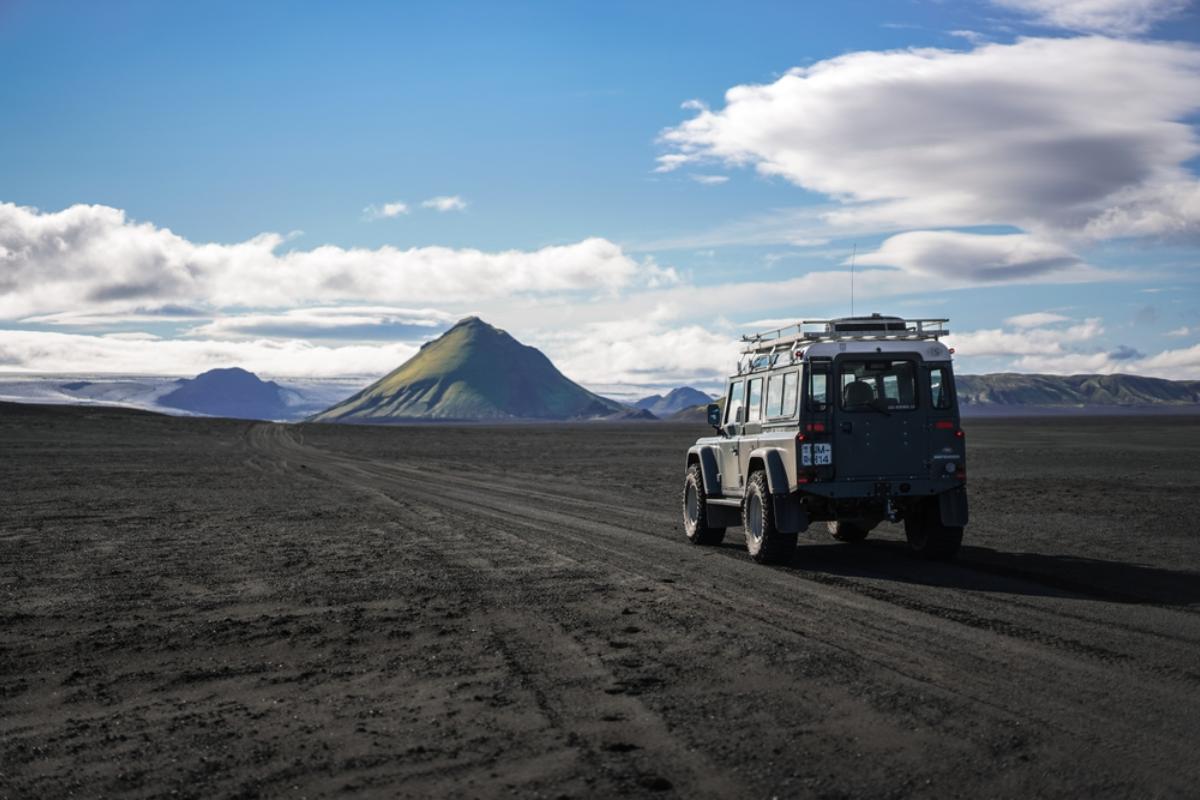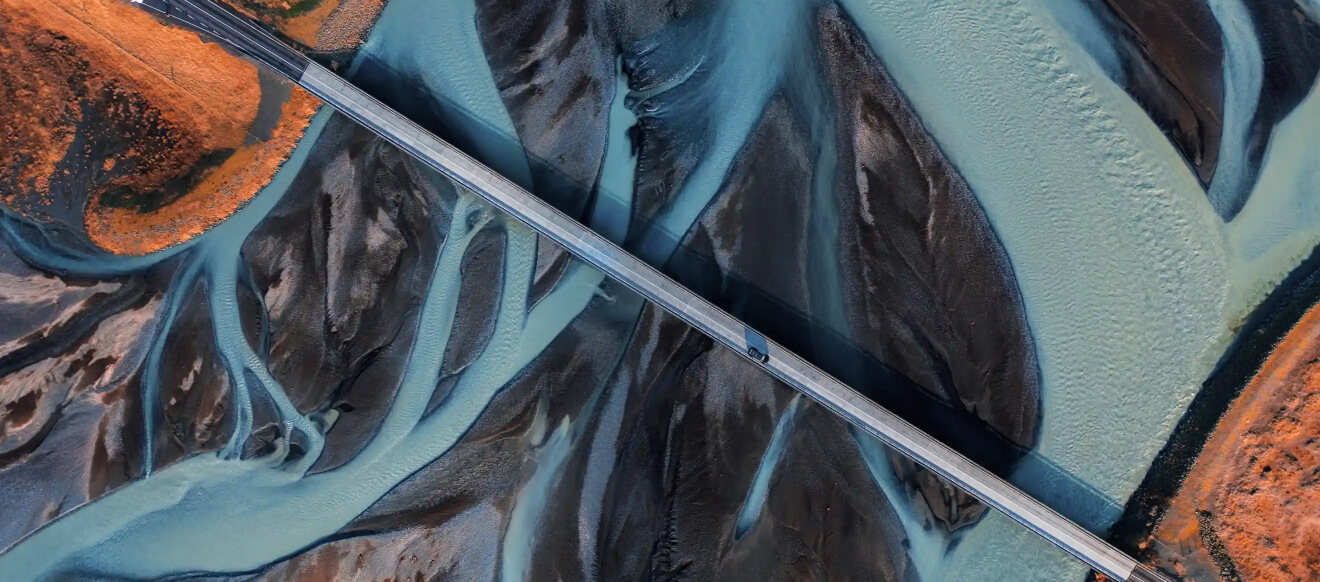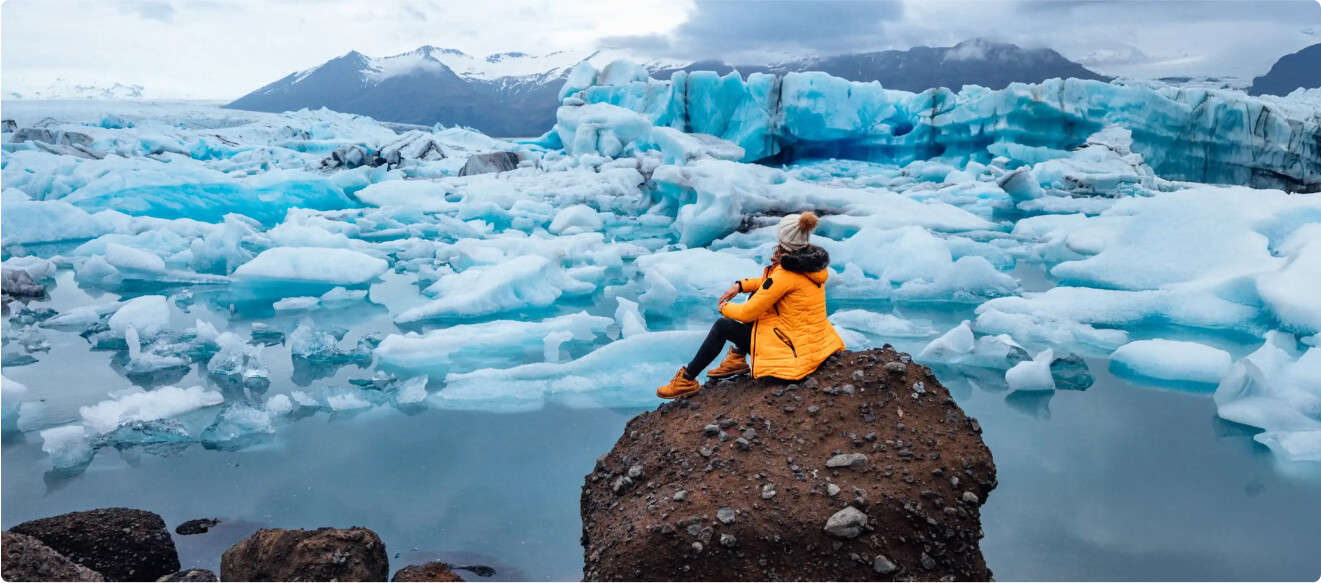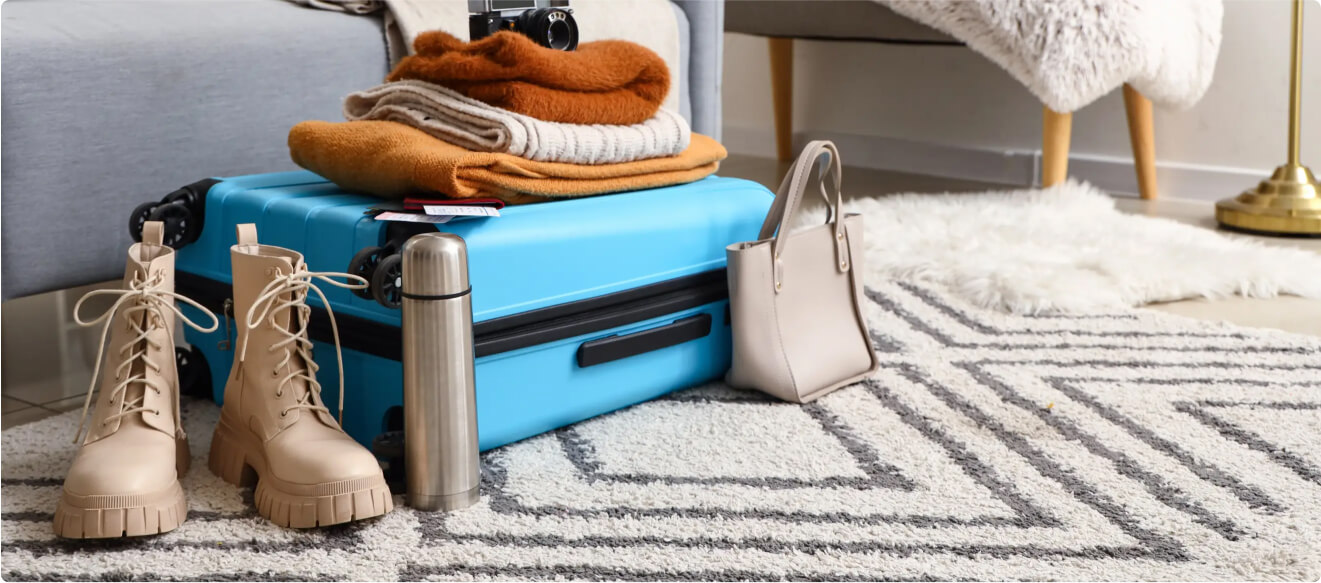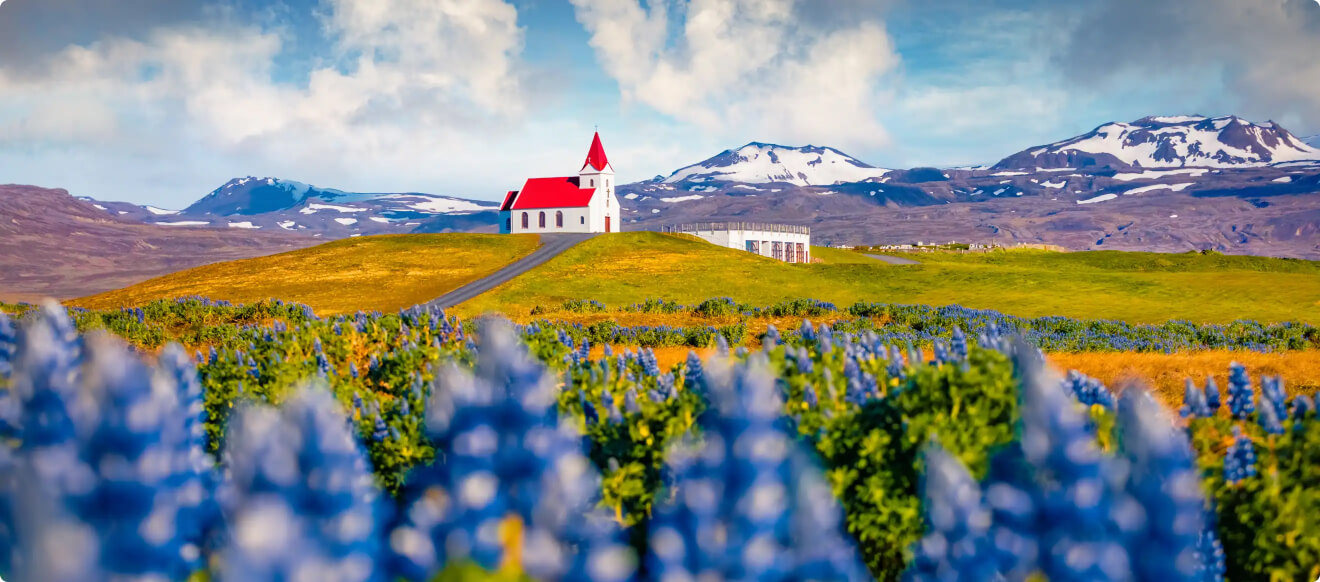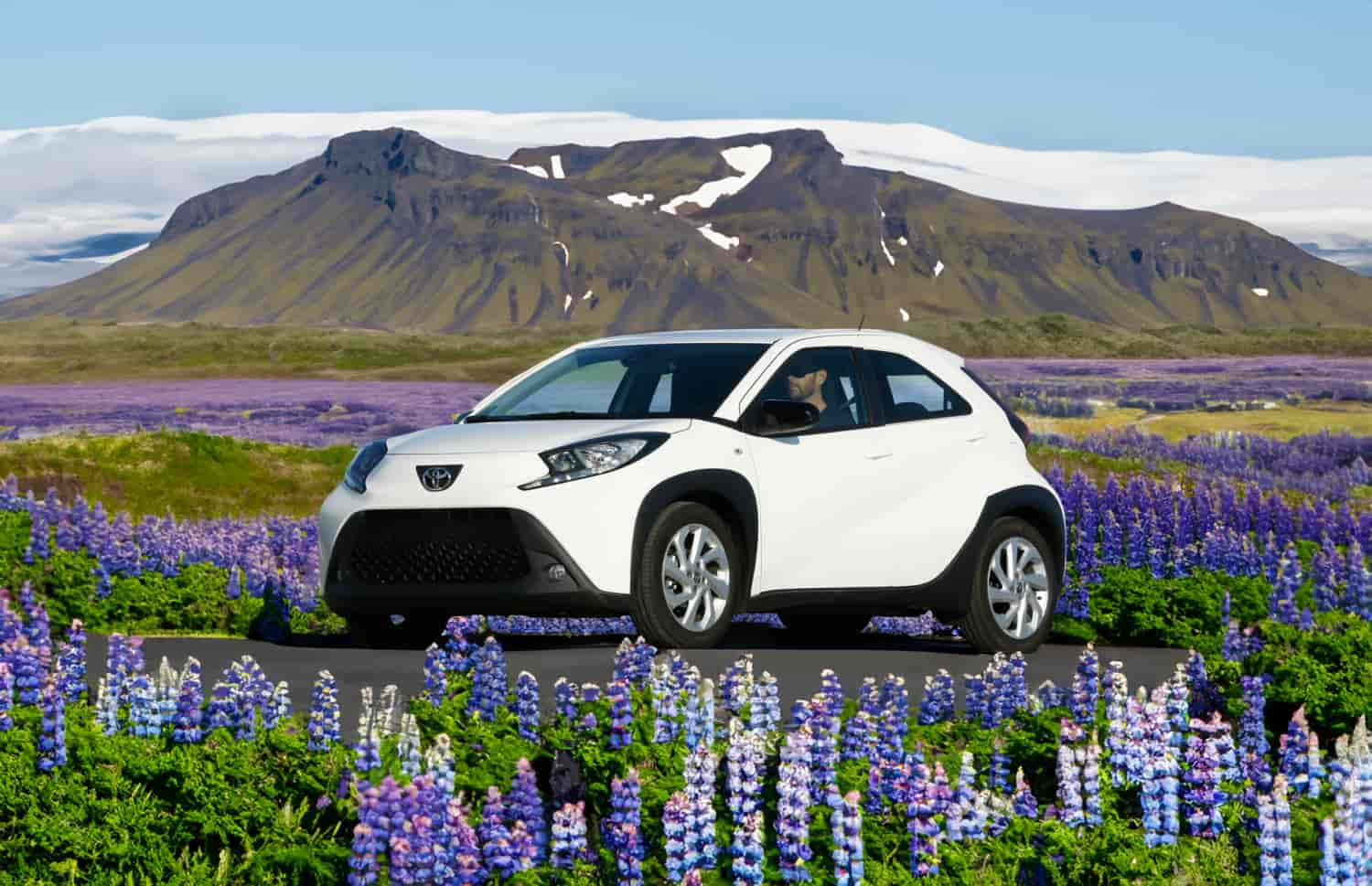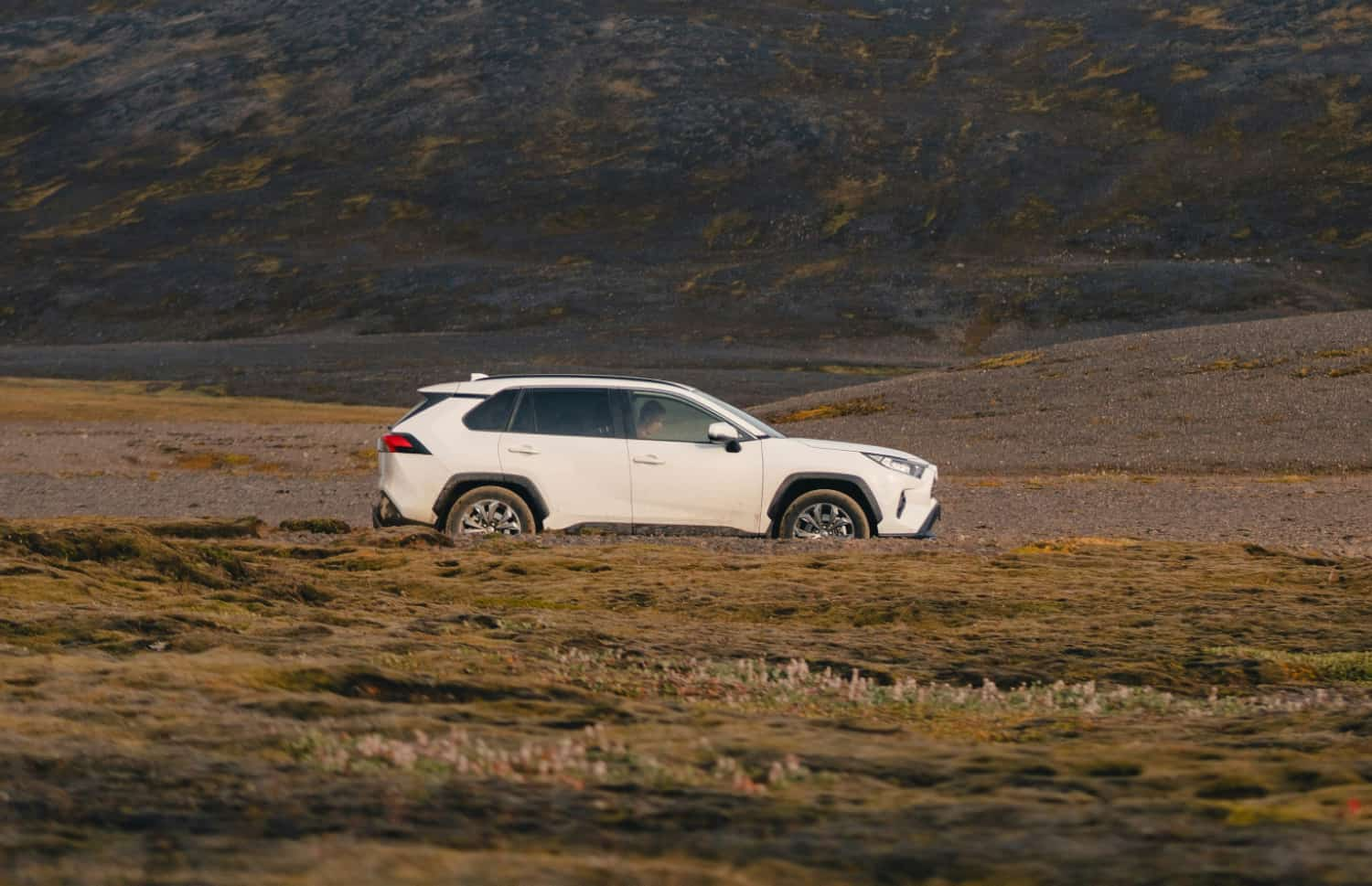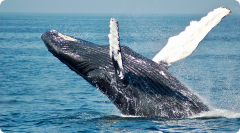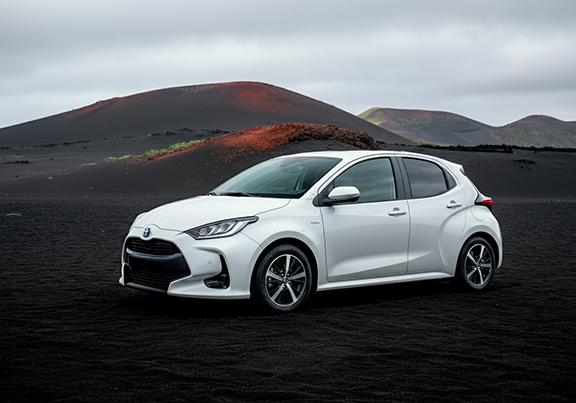You're standing at the rental counter, eager to hit Iceland's open roads, when the agent asks, 'Do you want sand and ash protection?'
You pause. Is this just another sneaky upsell, or do you actually need it? Iceland's winds don't just mess up your hair. They can sandblast your car like a high-powered sander. Ever seen paint stripped off metal in seconds? It's not exactly the holiday memory you want.
But don't stress, because you're in the right place. We'll break down why sand and ash protection in Iceland is essential when you really need it and how to avoid sky-high repair bills.
Understanding Sand and Ash Damage in Iceland
You might think the biggest threats are icy roads or river crossings, but the real danger could come from something as simple as wind. Many travelers assume sand and ash damage only happens during volcanic eruptions, but regular sandstorms are a far bigger risk.
Iceland's unique landscape of volcanic deserts, powerful winds, and open terrain means that even on a clear day, strong gusts can whip up loose sand and ash, causing serious damage to vehicles. Without proper protection, you could end up with a rental car that looks like it lost a fight with a sandblaster.
Why Is Iceland Prone to Sand and Ash Damage?
Iceland's geography and weather make sand and ash damage a real threat to rental cars. Here's why:
- 20% of Iceland's Surface is Covered in Ash and Sand – Past volcanic eruptions have left behind massive deposits, creating a persistent risk.
- Powerful Winds – Gusts regularly exceed 50 mph (80 km/h), strong enough to turn sand into high-speed projectiles that can strip paint and scratch glass.
- Lack of Vegetation – With little plant life to hold the ground in place, loose sand and ash can be easily lifted by wind.
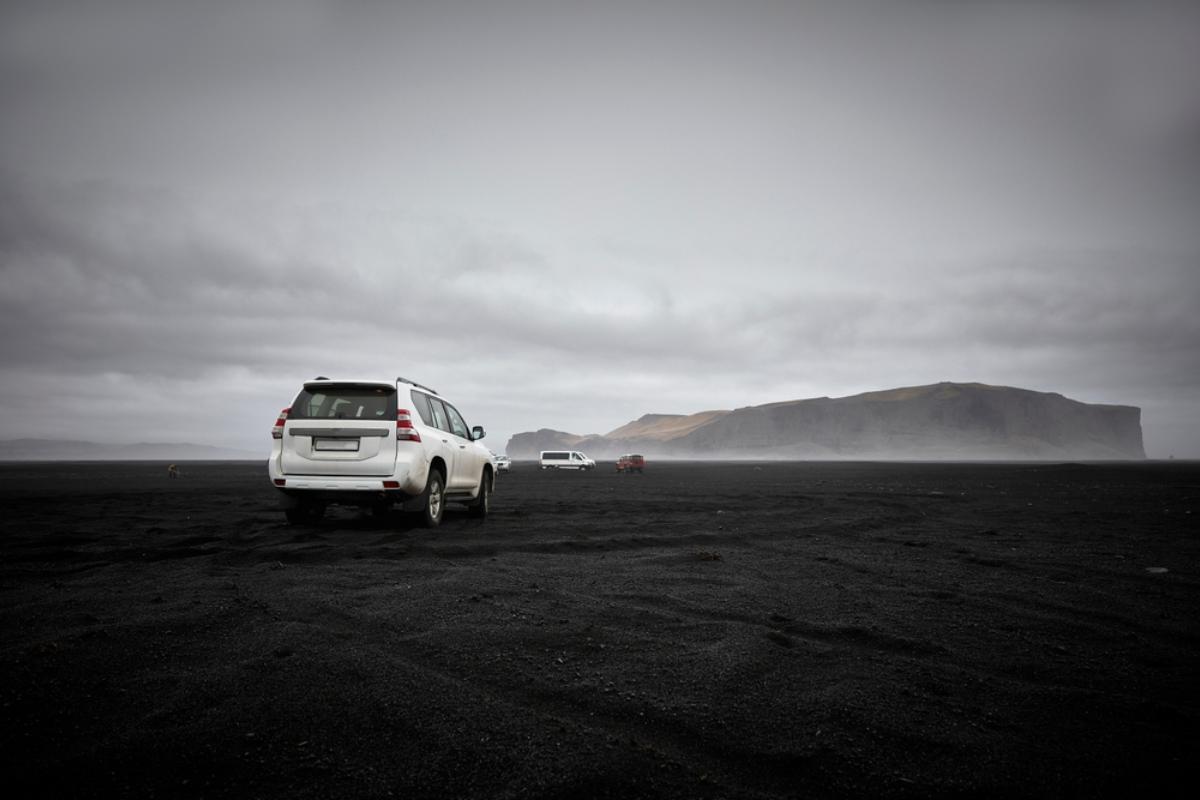
Real Examples of Sand and Ash Damage Incidents
In 2022, a rental car in Iceland took a serious beating from a sudden sandstorm. The exterior was left scratched and stripped, with the damage so severe that repair costs ran into the thousands.
If the driver had opted for volcanic ash insurance in Iceland, they wouldn't have paid a cent. Another traveler faced chipped paint after driving near a windy coastline.
The rental company called it 'sandblasting' and charged a hefty fee, though the driver disputed it.
Back in 2010, the Eyjafjallajökull Volcano eruption covered cars in ash, leaving many owners stuck with costly repairs when they lacked proper coverage.
What Kind of Damage Can Sand and Ash Cause to a Rental Car?
Sand and ash might not seem like a big deal at first, but they can cause serious damage to a rental car. Without sand and ash protection in Iceland, you could end up paying for costly repairs.
- Paint Damage – Sand and ash work like sandpaper, stripping away the car's glossy finish and leaving behind a dull, scratched surface. In bad cases, a full respray might be needed.
- Glass Damage – High winds can fling abrasive particles against windows and windshields, leaving scratches or even tiny pits that weaken the glass.
- Mechanical Issues – Fine ash can sneak into air filters, vents, and engine components, potentially causing overheating or other problems.
- Interior Damage – If sand and ash get inside, they can settle into upholstery, vents, and electronic systems, making deep cleaning a nightmare.
- Undercarriage Wear – Driving through loose volcanic material can grind against the vehicle's underside, leading to long-term damage.
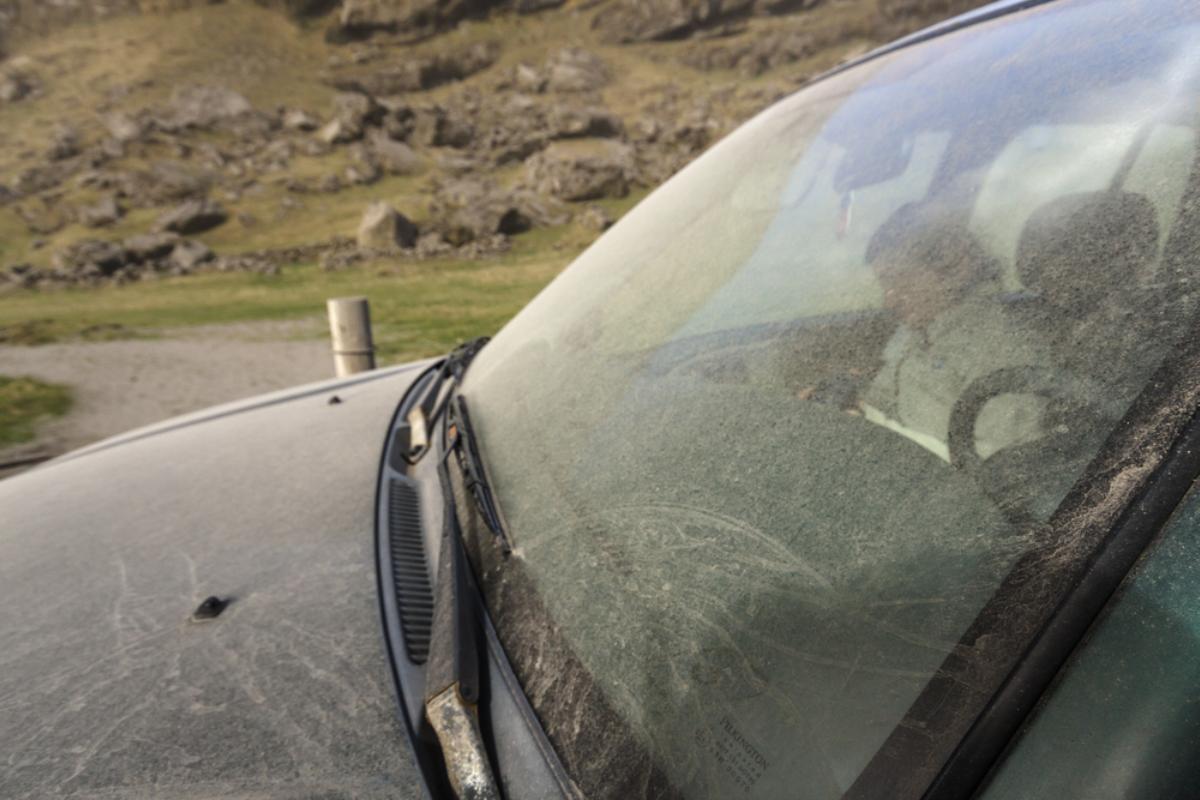
What Is Sand and Ash Protection?
SAAP is an optional insurance add-on that covers damage caused by volcanic ash and sandstorms. Standard rental insurance typically doesn't include this, meaning a single windstorm could leave you with a hefty repair bill. SAAP helps cover the costs of damage to paint, windows, and even mechanical parts affected by fine ash.
How Does Sand and Ash Protection in Iceland Work?
If a sandstorm or volcanic ash causes damage to your rental, SAAP ensures you won't have to pay out of pocket for repairs. When you add this coverage, the rental company handles costs for scratches, windshield damage, and ash-related mechanical issues. Some policies have exclusions or deductibles, so it's worth checking the details before you hit the road.
What Does This Insurance Cover?
Think of Icelandic SAAP as a safety net for your rental car. If strong winds kick up sand, gravel, or volcanic ash, this insurance helps cover the damage. Here's what it typically includes:
- Paint damage – No one wants a car that looks like it went through a sandblaster.
- Window damage – Scratches or cracks on the windshield and side windows.
- Headlights and exterior lights – Flying debris can leave them chipped or shattered.
- Plastic and chrome parts – Sand and ash can wear down these surfaces fast.
- Wheels and rims – Abrasive materials can cause scuffs and scratches.
What Is NOT Covered by Sand and Ash Protection?
SAAP sounds great, but it's not a free pass for all kinds of damage. Like any insurance, there are limits. Here's what a damage waiver won't cover:
- Driving in prohibited areas – If you take your rental into off-limits or closed roads, your coverage won't apply.
- Off-road driving – Iceland's rugged terrain is tempting, but driving through rivers, beaches, or rough trails isn't covered.
- Seaspray damage – Taking a ferry? If salty sea spray damages the car, you're on the hook for repairs.
- Mechanical failures – If the engine breaks down and it's not directly from sand or ash, SAAP won't help.
- Active volcanic eruptions – If you drive near an eruption site and the car gets damaged, don't expect coverage.
Do You Need Sand and Ash Protection for Your Iceland Car Rental?
The short answer is yes. SAAP is highly recommended for anyone renting a car in Iceland. You can also check our Iceland Car Rental Insurance Guide for expert advice. But let's understand what other factors you should consider before opting for SAAP.
Factors to Consider Before Deciding
Weather Conditions
- Wind Speed – Iceland's powerful winds can easily lift sand and ash. Even at just 7–8 m/sec (15–18 mph), a sandstorm can occur.
- Unpredictability – Icelandic weather changes rapidly. As the local saying goes, 'If you don't like the weather, just wait five minutes.'
- Seasonal Variations – Sand and ash storms can happen year-round, but certain times of the year pose a greater risk.
Travel Season
- High-Risk Months – February, March, and April have the highest chance of sand and ash storms due to strong seasonal winds.
- Spring Thaw – As snow melts during spring, it leaves behind loose, dry sand that's easily picked up by the wind.
- Summer Considerations – While grass coverage is higher in summer, parts of the country remain prone to sandstorms.
- Winter – Snow can reduce the risk, but conditions shift quickly, and strong winds can still cause damage.
Additional Considerations
- Duration of Stay – Longer trips increase the chances of encountering a sandstorm or unexpected weather shifts.
- Budget – While SAAP is an extra cost, it could save you thousands in damage fees.
- Vehicle Type – Smaller cars or vehicles with exposed plastic and chrome parts are more susceptible to damage.
- Road Conditions – Less than half of Iceland's 8,000 miles of roads are paved, making loose gravel and sand more of a threat.
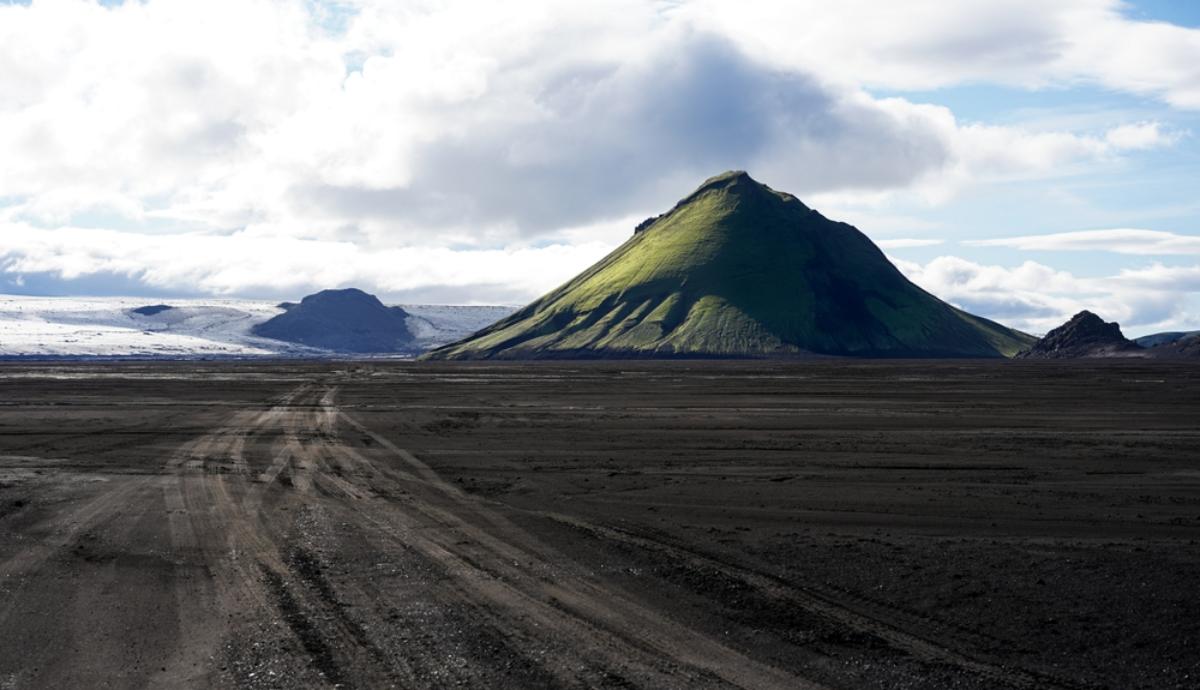
Do You Need Sand and Ash Protection - Checklist
Select "Yes" for each applicable question:
- Will you drive near South Iceland (Vik, Myrdalssandur, or Skeidararsandur)?
- Are you visiting between March and May?
- Do you plan to drive off paved roads?
- Would a $2,000 repair bill ruin your trip?
Regions in Iceland Where Sand and Ash Damage Is Most Likely
Driving through Iceland's wild landscapes is an unforgettable experience, but some regions pose a higher risk for sand and ash damage than others. Whether it's the vast Black Sand Beaches of the South Coast or the rugged Highlands, understanding where sandstorms are most common can help you decide whether SAAP is worth it.
South Coast: The Hotspot for Sandstorms
Iceland's South Coast is one of the most wind-exposed areas in the country. Here's why it's a high-risk zone for rental car damage:
- Large stretches of wasteland with only patches of green vegetation, leaving loose sand exposed to the wind.
- Volcanic ash from past eruptions, especially in areas affected by the 2010 Eyjafjallajökull eruption.
- Nearly 200 km (124 miles) of black sand beaches, including the famous Reynisfjara Black Sand Beach, where strong gusts regularly pick up sand and ash.
- Consistently high winds can easily turn loose material into airborne projectiles.
If you plan to drive along the South Coast, particularly west of Vík, sand, and ash protection is highly recommended. This stretch is notorious for sandstorms that can cause severe vehicle damage.
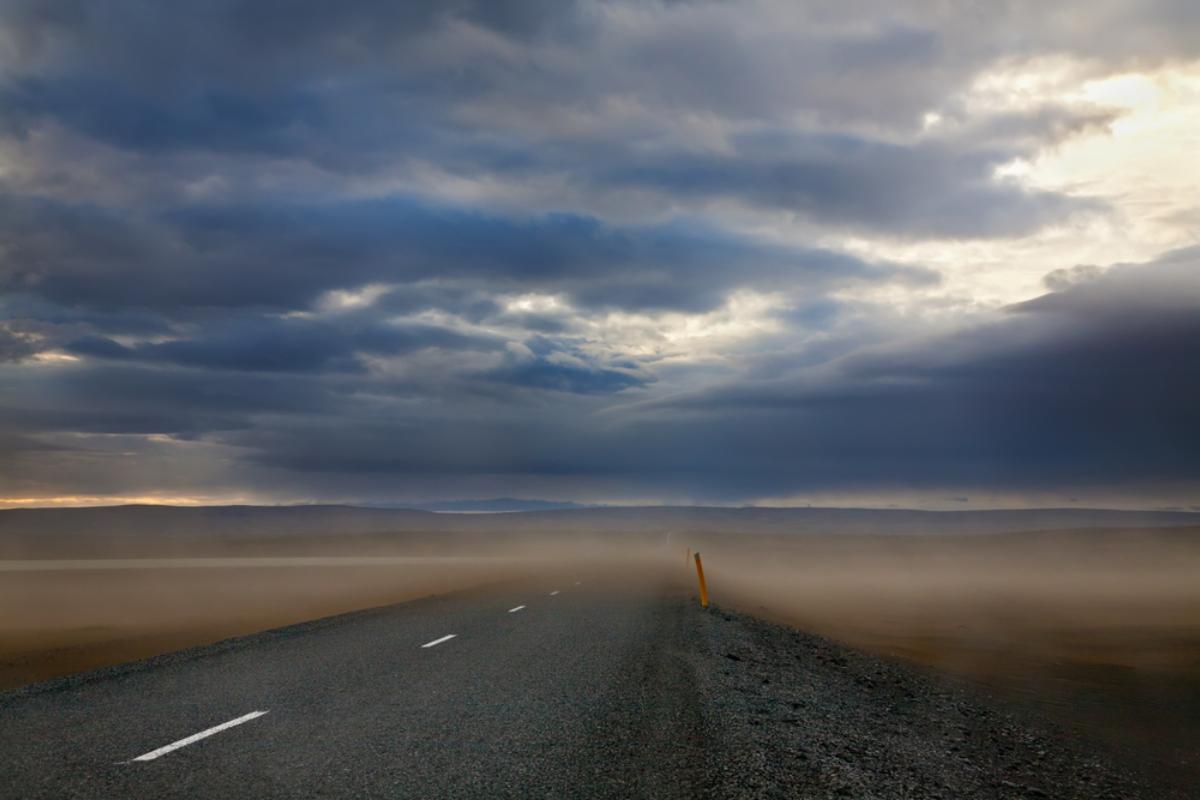
Remote Regions: Increased Risk of Sand and Ash Damage
Beyond the South Coast, other remote areas in Iceland are also prone to sand and ash storms:
- Westfjords – Known for its rugged terrain and unpredictable weather, this region has areas with exposed sand and gravel.
- Highlands – Iceland's interior highlands have vast stretches of volcanic sand and ash, combined with extreme winds that can create severe sandblasting conditions.
Other High-Risk Areas
Some locations experience frequent sandstorms due to a combination of geography and wind exposure:
- Ring Road hotspots – Certain stretches of the Ring Road are particularly exposed, with sandstorms occasionally reaching the highway.
- Gravel roads and F-roads – Many of Iceland's interior roads are unpaved, increasing the risk of sand and gravel being thrown up onto your vehicle.
- Coastal areas with sandy beaches – Similar to the South Coast, other beachside regions can experience sandstorms when winds pick up.
| Scenario | With Sand & Ash Protection | Without Protection |
|---|---|---|
| Car gets sandblasted in Vik | $200 deductible | $2,000+ out of pocket |
| You return the car damaged | No worries, covered | Rental company charges full price |
| Sandstorm while parked | Protection applies | You pay for repairs |
Sand and Ash Protection vs. Other Rental Car Insurance Options
When renting a car in Iceland, you'll see a long list of insurance options, but SAAP is one of the most unique. Iceland's extreme weather makes it a must-have in certain areas, but how does it stack up against other coverage options? Let's break it down.
How Does It Compare to Gravel Protection?
Both SAAP and Gravel Protection are useful in Iceland, but they cover different risks:
- SAAP covers windblown sand and volcanic ash, which can damage paint, windows, lights, and wheels.
- Gravel Protection covers loose stones kicked up from the road, often damaging windshields, headlights, and the car's body.
At Cars Iceland, our liability waiver insurance pack comes with SAAP included at 0 self-risk, ensuring you have complete peace of mind on every journey.
If you're driving outside Reykjavík, both are worth considering. However, SAAP is especially important on the South Coast and during high-risk months like February to April when sandstorms are more frequent.
Is It Included in Full Coverage Packages?
That depends on the rental company. Some include SAAP in their premium or full-coverage plans, while others treat it as a separate add-on.
- Some premium packages include SAAP automatically, meaning you won't need to pay extra.
- Other rental companies require you to add it separately, even with their most expensive plans.
Always double-check the terms before assuming you're fully covered. The definition of 'full coverage' varies between agencies, and many standard policies don't include SAAP by default.
Hidden Costs You Should Know About
Before opting in, keep these potential extra costs in mind:
Deductibles
- Some SAAP policies have a deductible of around 50,000 ISK ($350 USD), meaning you'll still pay a portion of the damage.
- Premium plans sometimes offer zero-deductible SAAP, but they cost more per day.
Daily Cost
- SAAP costs around 1,100 - 1500 ISK ($8–11 USD) per day, depending on the rental company.
Coverage Caps
- Some policies limit the maximum payout, so check the fine print before assuming you're fully protected.
Understanding these costs upfront can help you decide whether sand and ash protection is worth it. If you're also wondering about accident-related expenses, check out What Happens If You Crash a Rental Car? for more insights.
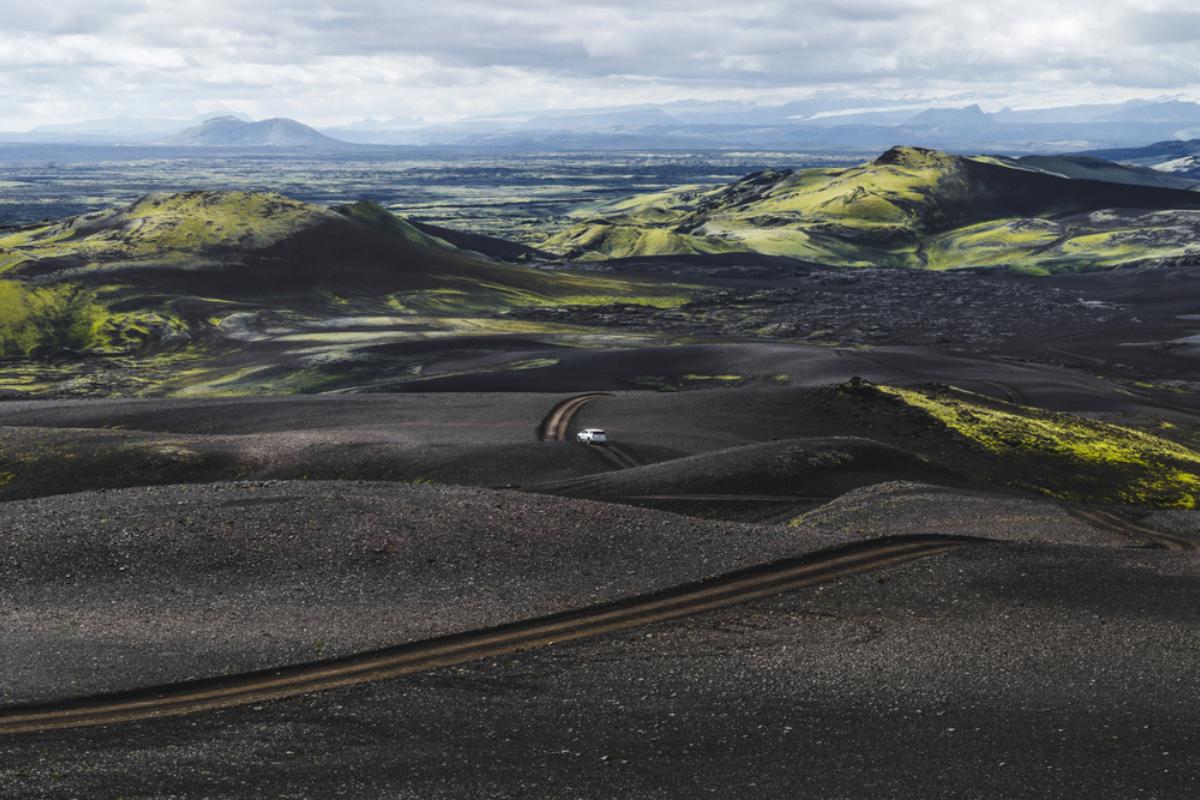
Where and How to Get Sand and Ash Protection?
If you're renting a car in Iceland, you might be wondering where to get SAAP and whether it's automatically included. The good news is that it's easy to add to your rental, but not all companies offer the same coverage.
Renting a Car in Iceland: Do All Companies Offer It?
Not every rental company in Iceland includes SAAP in their standard insurance packages. Some offer it as an add-on, while others bundle it into premium plans.
At Cars Iceland, we provide SAAP as part of our insurance options, ensuring you're covered against Iceland's unpredictable weather. While some companies may exclude it or charge higher rates, we make it easy to add this essential protection to your rental.
Booking Online vs. Adding Protection at the Counter
When getting car rental insurance in Iceland, you have two options for SAAP. You can book it in advance or add it at the counter. Each has its pros and cons, so it depends on how you like to plan.
Booking Online
- Usually cheaper than adding it last minute.
- Helps you plan your budget before arriving.
- Some companies offer discounted package deals that include SAAP.
- Best for high-risk months (February to April) or if you're driving along the South Coast, where sandstorms are more common.
Adding at the Counter
- Gives you the flexibility to decide based on weather conditions.
- Often more expensive than pre-booking.
- Risk of limited availability during peak travel seasons.
- It might work for summer trips when the risk is lower or if your itinerary allows you to adjust based on conditions.
If you want the best deal on car rental insurance in Iceland, booking online is usually the smarter choice. But if you're traveling in summer and have flexibility, you can wait and decide at the counter.

Are There Third-Party Insurance Providers?
Yes, you can find third-party insurance providers that offer coverage for rental cars in Iceland, including protection against sand and ash damage. However, the options are more limited than in other countries, and there are some key differences to consider.
Rental Company Insurance
- Directly integrated with your rental, making it the easiest option.
- No upfront payment in most cases. You only pay if damage occurs.
- It may have higher daily rates but often comes with lower deductibles.
Third-Party Providers
- It can offer more comprehensive coverage at lower rates.
- Typically, it requires upfront payment, meaning you pay for damages first and file for reimbursement.
- Some policies include SAAP, but not all. It's essential to check the fine print, especially in Iceland.
If you're considering a third-party liability policy, make sure it covers sand and ash damage specifically, as not all providers include this risk in their standard coverage.
How to Minimize the Risk of Sand and Ash Damage While Driving
We have already covered how SAAP can minimize the financial risk of driving in Iceland. Still, there are also steps you can take to reduce the chances of damage while on the road.
Best Driving Strategies in High-Risk Areas
When driving in Iceland, especially in areas prone to sand and ash damage, taking the right precautions can save you from costly repairs. Follow these tips to minimize the risk:
- Check weather and road updates – Use the Icelandic Met Office and umferdin.is to stay informed about conditions.
- Slow down – Reducing speed, especially on gravel roads, lowers the impact of flying sand. See Iceland's speed limits for safe driving guidelines.
- Avoid high-risk areas in strong winds – The South Coast and Highlands are the most affected regions. Plan your route accordingly.
- Travel in summer if possible – Vegetation helps keep sand in place, while February to April is the riskiest period.
- Be prepared – Carry water, snacks, and blankets in case you need to wait out a storm.
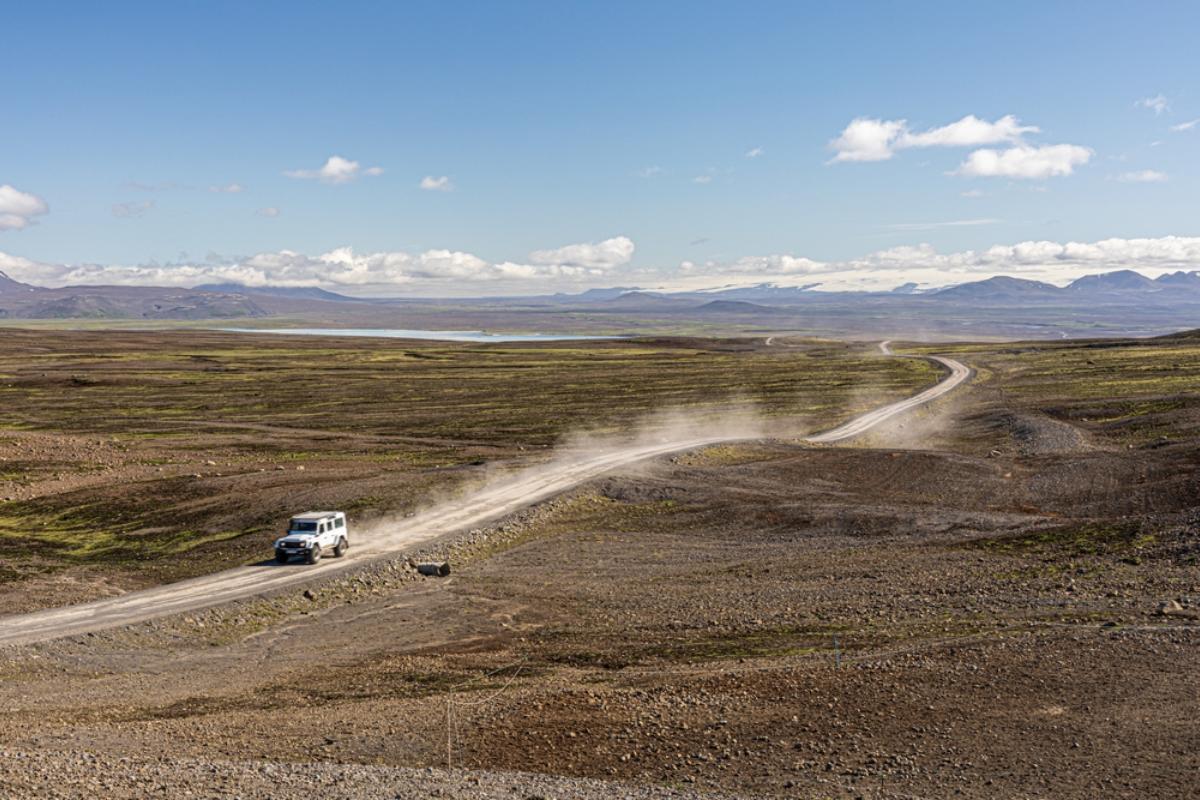
How to Protect the Car When Parked
Parking in Iceland isn't just about finding a good spot. It's about protecting your rental from sand and ash damage. The wind can be brutal, and a simple mistake could lead to scratches, dents, or even dust-filled interiors. Here's how to keep your car safe:
- Face the wind – Park with the front of the car facing into the wind to reduce the risk of door damage.
- Find a sheltered spot – Look for parking near buildings, cliffs, or natural barriers to block strong gusts.
- Keep windows closed – Even a tiny gap can let in sand and volcanic ash, causing a mess inside.
- Use protective covers – If you have access to one, a car cover can add an extra layer of defense against airborne debris.
What to Do If You Get Caught in a Sandstorm?
Driving in Iceland can be unpredictable, and sandstorms are no joke. If you ever find yourself in the middle of one, stay calm and follow these steps to protect yourself and your rental car.
- Slow down and pull over – Gradually reduce your speed and find a safe spot away from traffic.
- Turn on your lights – Keep your headlights and hazard lights on so other drivers can see you.
- Close vents and windows – Switch to recirculated air to keep sand and ash from getting inside.
- Stay in the car – Keep doors and windows tightly shut and wait for conditions to improve.
- Face into the wind – If possible, park so the front of your car takes the brunt of the wind.
- Wait it out – Driving in low visibility is dangerous, so be patient until it's safe to continue.
- Call for help if needed – If you're stuck or in danger, dial 112 for emergency assistance.
What to Do If Your Rental Car Suffers Sand or Ash Damage?
If your rental car gets hit by a sandstorm or covered in volcanic ash, don't panic. Acting quickly and following the right steps can help minimize costs and potential disputes with the rental company. If you believe you've been unfairly charged, you can also check European Commission Passenger Rights for guidance on consumer protection.
First Steps to Take Immediately
- Inspect the car – Check the exterior for scratches, chipped paint, windshield damage, or any signs of sand buildup.
- Document everything – Take clear photos and videos of the damage before moving the vehicle.
- Contact the rental company – Inform them as soon as possible and follow their instructions for the next steps.
The sooner you report the damage, the better your chances of resolving it smoothly.
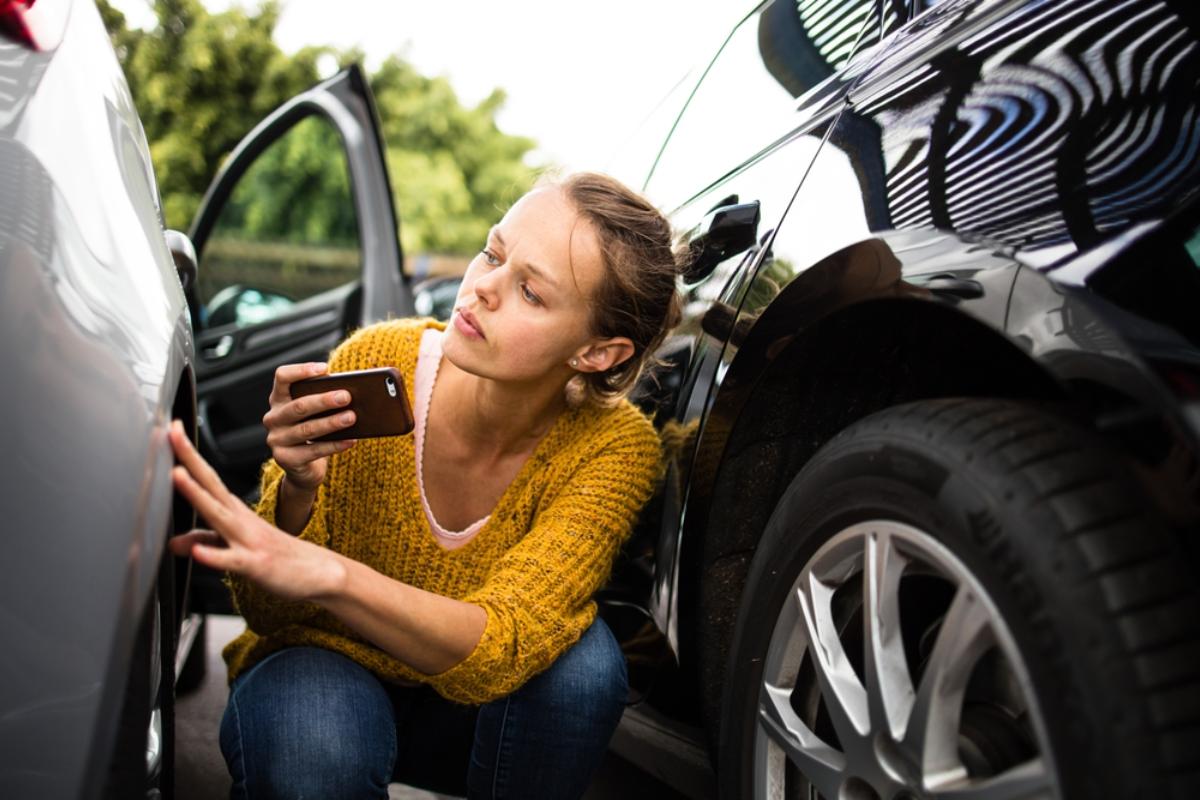
Filing an Insurance Claim: What You Need to Know
- Review your policy – Check if SAAP was included in your rental insurance.
- Gather paperwork – Most companies require a damage report, photos, and sometimes a police statement.
- Submit your claim – Follow the rental company's process, whether through their office or an online portal.
Having all the necessary documentation ready will speed up the claim process.
Can You Be Charged If You Didn't Get Insurance?
Yes, and the repair costs can be substantial. Without SAAP, you're responsible for any damage, which could mean:
- Paint repairs – Sandblasted paint can cost anywhere from ISK 500,000 to ISK 1,500,000 ($3,500–$10,500 USD), depending on the severity.
- Windshield replacement – Scratches or cracks caused by windblown debris may cost ISK 99,060 to ISK 183,960 ($700–$1,300 USD).
- Additional service fees – Many rental companies charge administrative or downtime fees on top of repair costs.
Some companies may deduct the full repair amount directly from your credit card, so always check the terms before renting. Declining SAAP could leave you with an unexpected and costly bill.
| Damage Type | Average Cost Without Insurance |
|---|---|
| Scratched paint | $1,500 - $3,000 |
| Broken windshield | $600 - $1,200 |
| Air filter replacement | $100 - $250 |
Who Absolutely Needs This Insurance?
While every traveler should consider it, SAAP is a must for:
- Anyone driving the South Coast or Highlands, where sandstorms are common.
- Visitors traveling between January and April, the windiest months.
- Off-road adventurers exploring unpaved routes where volcanic ash buildup is more likely.
If you fall into any of these categories, skipping this insurance could be a costly mistake.
Who Can Possibly Skip It?
Some travelers might not need SAAP if:
- They're staying in Reykjavík or other urban areas with minimal risk.
- Their trip is during summer when vegetation helps keep sand in place.
- They plan to drive only short distances on well-paved roads.
However, Iceland's weather is unpredictable, so skipping it is always a bit of a gamble.
Our Expert Recommendation for Tourists Renting a Car in Iceland
If you plan on exploring beyond Reykjavík, especially along the South Coast, getting SAAP is a smart move. The cost of insurance is minor compared to potential repair fees, and Iceland's strong winds can create sandstorm conditions in minutes.
For peace of mind and a stress-free trip, we highly recommend adding SAAP to your rental package.
Common Questions About Sand and Ash Protection
Can I add sand and ash protection later?
Yes, you can typically add SAAP later, either at the rental counter or during your trip. However, booking it in advance is often cheaper and ensures availability.
Will my travel credit card cover this insurance?
Most travel credit cards do not cover SAAP, as it's considered a specialized risk. Always check your card's policy before relying on it for rental car insurance in Iceland.
What if I only drive in Reykjavik?
Driving only in Reykjavík lowers the risk, but strong winds can still carry sand and ash. If you're not venturing to the South Coast or Highlands, you might not need extra coverage.
Should You Get Sand and Ash Protection in Iceland?
If you plan to rent a car in Iceland, adding extra protection can save you from costly repairs. Sand and ash protection in Iceland is essential for those driving through the South Coast and Highlands, where strong winds and volcanic terrain increase the risk of damage.
Standard insurance won't cover sandblasted paint or scratched windows, leaving you with expensive bills. While city drivers might skip it, anyone exploring beyond Reykjavík should strongly consider it. Need help choosing the right coverage? Contact our friendly team at Cars Iceland, and we'll make sure you're fully prepared for a stress-free road trip!





